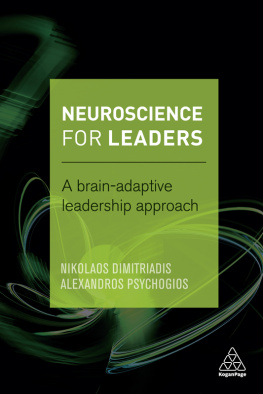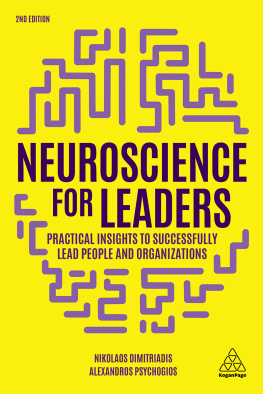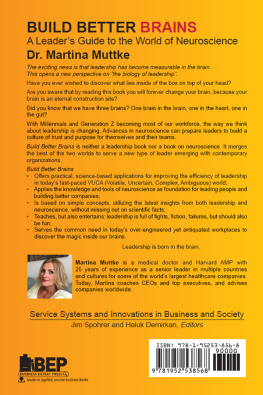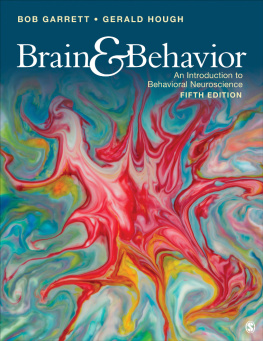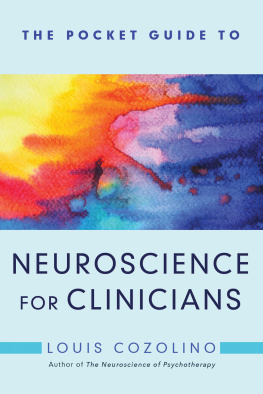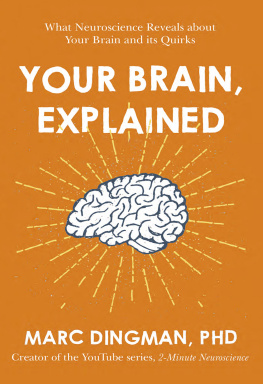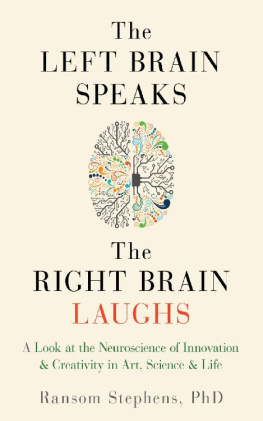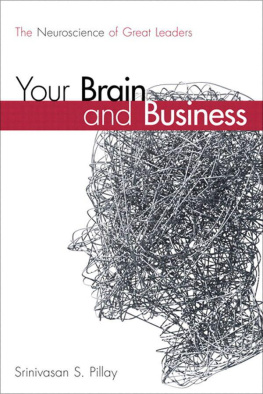We would like to thank the dedicated, experienced and professional team at Kogan Page for its invaluable support.
We also want to thank all our students, colleagues, corporate clients and audiences for their enthusiastic reception of the ideas of this book and for their constant provision of fresh challenges, perspectives and lessons. Our brains keep flourishing because of you!
Most of all, we thank our families for their unlimited understanding and love. This book is dedicated to them.
01
Fridays business plan meeting
It is Friday afternoon and everyone has showed up for the meeting. The whole week has been extremely demanding as the team have been finalizing the business plan for the next year. Working until late at night has been the norm during this week. The last important details on key strategic issues are to be clarified in this meeting and the tension in the room is evident. Everybody is physically and mentally exhausted and cant wait to get it over with. Although business planning has always been demanding, this year the pressure has been higher than ever due to new market challenges. This business plan could make a big difference for the company by creating real growth or it could perform below expectations, seriously damaging both the companys and the teams reputation. The team leader enters the room. She has always been a believer in leading by example so this week she was the first to enter the office early in the morning and the last to leave late at night. Her deep-rooted belief is that if they all work harder and longer they will succeed. She takes a look at the agenda then at the strained faces around the table. The meeting begins.
Implementation arguments quickly evolve into confrontational lock-ins. Disagreements on strategy turn into nasty personal comments. And the widespread dissatisfaction progresses by the end of the meeting into a few emotional breakdowns. Although the team ultimately manage to deliver a business plan that achieves its main goals, the team spirit that had been so carefully and expensively built over the last year has been irreversibly damaged. Relationships never recover and two key people leave the company within the next few months. Surprising as it may sound, the overall outcome of that Friday meeting had already been decided before it even started. Not by the people in that meeting. Not even by their leader. But by their brains.
How many times do leaders and managers face situations like that? Formal meetings, important presentations, feedback sessions or simple decision making are frequently performed by strained and overworked people. Regardless of the cultural stereotype of the all-powerful leader who is constantly on top form and eternally in total control, science shows that brain strength has limits. If those limits are ignored, self-control can deteriorate fast, with dire consequences for all involved. Willpower is a key leadership characteristic and one that has to be carefully nurtured to produce desirable support for both clear thinking and better management of emotions. And it all starts in the brain.
The brain consumes more energy than any other organ in our bodies. According to a Scientific America article in 2008, the brain takes, in total, more than 20 per cent of the whole energy available to the body (Swaminathan, 2008). Although it represents only 2 per cent of our body mass it consumes one fifth of the oxygen and one quarter of the glucose (Foer, 2012). If it were an organization this could mean that the brain represents a department with just 2 per cent of the total workforce, but one that demands 20 per cent of the companys financial resources. Naturally, every decision in this department would be taken with maximum efficiency and effectiveness in mind. Prioritization would be the name of the game and every action would be painstakingly weighed by its impact on the survival of the whole organization. The brain behaves in exactly the same manner. It prioritizes body functions that ensure its survival, redirecting energy to those strategic areas from more exotic and luxurious functions such as analysis and forecasting, if and when needed. Going back to the organizational analogy, it is not very different from the fact that many companies, when coping with diminishing sales, focus on and commit more resources to those areas believed to be essential for the survival of the business. At the same time they take resources away from more elaborate and risky future projects and from expensive advertising campaigns.
Going a step further, neuroscience reveals that the brain consumes most of its energy on automatic maintenance systems rather than on executive, higher cognition functions. The brain consumes almost 90 per cent of its energy in a calm state, when people are not asked to do much thinking. So, it actually has a small portion of its energy available to devote to complex and cognitively demanding tasks such as managing a year-end meeting, debating the last details of a business plan and navigating diplomatically through the teams conflicting opinions. We go through our lives being confident that most of the brains processing happens in the area we are aware of, our consciousness. This could not be further from the truth. Most of the power is used elsewhere, deep into our brains. The part that we believe offers us our main competences and skills in developing ourselves and our careers, our analytical problem-solving part, receives just a fraction of the total energy. This means that we have to be extremely careful and strategic about managing this energy. Otherwise we will not have much to use in our demanding, challenging and exhausting daily management tasks.
The main question leaders need to answer then is how much power they will allow their brain to channel into its problem-solving section when they need to perform their best in such conditions. Are they going to create a situation where the brain will be starving for power and automatically will be reallocating it to more crucial and deeper structures for its survival? Or are they going to manage their working and living environments in such a way that will allow them to perform within maximum brain-power capacity when facing adversity? The first option represents the fast lane to bad decisions, angry responses and failed meetings. The second option represents the safe way for leaders to enhance their decision-making abilities and control over emotional reactions in an effective and meaningful way.
Willpower and self-control are not infinite. Walter Mischel, in his book The Marshmallow Test , analytically describes and explains the famous Stanford marshmallow experiment, conducted by him in the late 60s and early 70s. Walter has demonstrated graphically that when we are exposed to situations where we need to portray self-control we consume brain energy fast and thus perform much worse in the next task that needs willpower. Children that demonstrated higher willpower when asked to restrain themselves from eating a marshmallow put in front of them, performed worse in the next test on self-control that followed immediately after the marshmallow one. On the contrary, kids that showed less self-control and ate the marshmallow fast in the first test, performed much better in the second one. How can this happen? Isnt willpower something we either have or do not have? Results of the marshmallow experiment look counterintuitive since we tend to believe that willpower is a key personality trait. Societies seem to separate people into strong and weak, whatever the situation, and people tend to distinguish leaders stereotypically as strong and weak based on specific prototypes that they have in their minds.
When we present the marshmallow experiment in the class and we ask our audiences, students or executives, about the outcome of the second test, almost unanimously they respond in a predictable way: the kids that showed higher willpower in the first test did better in the second test as well. When we reveal the actual results it usually takes them a few minutes to adjust to this new view on willpower. This is further proof that it is not easy to overcome long-held beliefs in human nature and behaviour even when scientific proof is so strong. When they do come around to the idea that willpower is like a muscle that you can strain, they are able to explain past experiences better and see the future in a more confident and clearer way. They tend to recognize specific cases in their professional lives during which they passed through an exhausting process of the brain that led them to think and act in a less effective way at a later stage.

